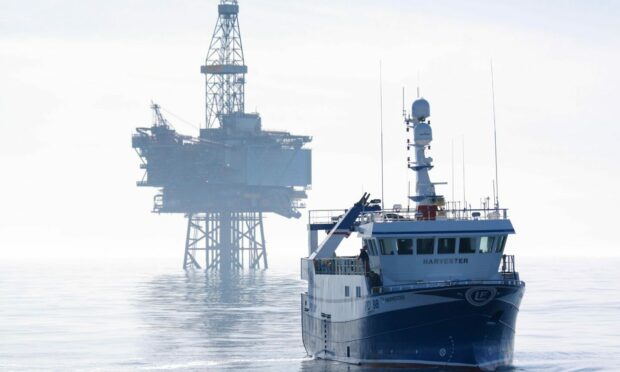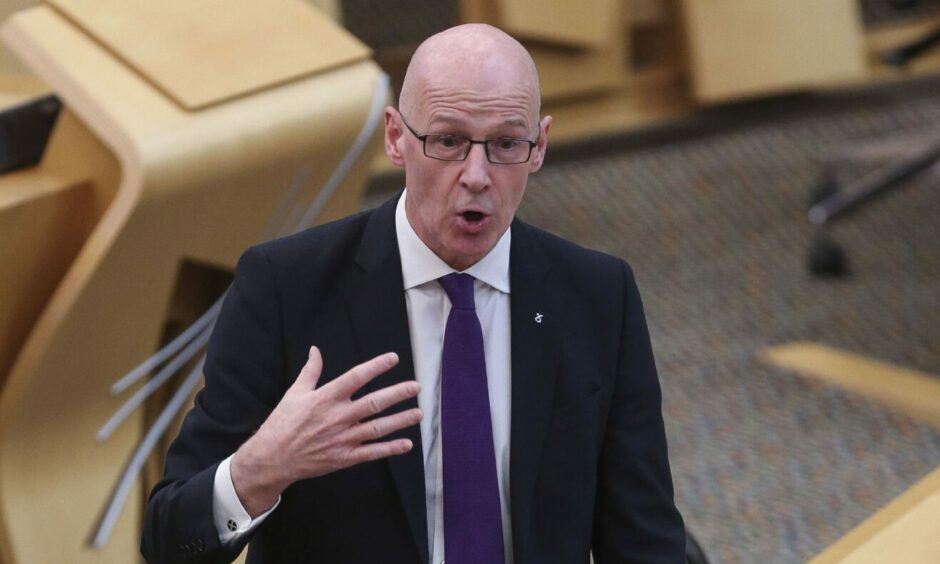North Sea oil and gas revenues will make Scotland’s stubbornly high deficit smaller than that of the UK, an economic thinktank has predicted.
Analysis by the Institute for Fiscal Studies (IFS) has confirmed that surging oil and gas prices have not only been good for energy producers, but also beneficial for Scotland’s balance sheet.
The group was responding to the annual Government Expenditure and Revenue Scotland (Gers) report, which showed Scotland’s 2021/22 deficit at 12.3% of GDP (gross domestic product) had fallen from last year’s figure of 22.7%.
This improvement in Scotland’s finances was largely driven by the rebound in North Sea oil and gas revenues, which are overwhelmingly generated in Scottish waters.
The IFS said that this year, for the first time since the early 2010s when oil prices and taxes were last this high, Scotland’s underlying deficit is likely to be “similar to (and perhaps even smaller than) that of the UK as a whole”.
Deputy First Minister John Swinney said the figures showed Scotland’s fiscal position is “recovering faster than the UK’s, with a huge fall in the annual deficit thanks to the largest increase in revenues on record”.
He added: “This is before the full impact of the rise in oil prices that we’ve seen more recently, which is likely to see Scotland’s deficit fall faster than the UK’s again next year, with oil and gas revenue set to grow to £13 billion this year.
“The figures also highlight how the UK’s response to the cost crisis is being built on Scotland’s natural resources, not least with its windfall tax on the North Sea.”
‘Natural wealth’ vs Brexit impact
Highlighting the impact of Brexit, he said: “In the first full financial year since Brexit, the Gers figures show the economic harm of leaving the EU is driving up borrowing in the UK and contributing to the UK deficit being one of the largest in Europe.
“Even in the midst of an energy crisis, the UK as a whole is benefiting from Scotland’s natural wealth, which is why Scotland can expect its deficit to fall further in the future.”
David Phillips, associate director at the IFS said the Gers figures offered a “tale of two stories”, highlighting the dynamics oil and gas prices cause combined with an otherwise lacklustre economic performance.
He said: “The headline numbers show Scotland’s deficit falling by more relative to GDP than the UK as a whole, driven by a rebound in oil and gas revenues, and a recovery in GDP from a bigger decline during the height of the pandemic.
“However, digging deeper shows that onshore revenues grew less quickly than the UK as a whole: they are now £800 lower person, compared to around £500 lower over the previous five years, and broadly similar to the UK average in the early 2010s.
“Government spending also fell by less in Scotland last year than in the UK as a whole.”
Oil and the case for Scottish Independence
Oil and gas revenues have played less of a role in the case for Scottish independence in recent years following an era of decline since the 2014 oil price crash and a focus instead on moving Scotland away from fossil fuels towards a cleaner “net zero” energy system.
Phillips said the Scottish Government’s share of oil and gas revenues could be “fortuitous” for supporters of Scottish independence who would be buoyed by the resulting reduction in Scotland’s deficit.
But he warned this was unlikely to be a permanent bonus as the North Sea still faced decline.
He said: “Figures for the current financial year, 2022-23, will come just before the date the Scottish Government hopes to hold a referendum on independence.
“That timing could be fortuitous for the ‘Yes’ camp as further increases in oil and gas prices, together with the windfall tax on the profits of oil and gas producers, mean Scotland’s headline overall deficit could be at a similar or even lower level than the UK as a whole for the first time in over 10 years.
“But, the long-term decline in North Sea output means that even if these higher prices are sustained, at best they would buy the government of an independent Scotland more time to boost onshore economic growth and revenues.
“Without this, an independent Scotland would still likely face bigger tax rises or spending cuts in the decades ahead.”
The numbers
Scotland’s geographic share of North Sea oil and gas revenues are estimated to have increased almost five-fold since last year, from £800m to £3.5n- the biggest increase since 2013-14.
If Scotland’s share of UK oil and gas revenues were maintained at last year’s levels, revenues of £14.5bn in fiscal 2022 would be enough to reduce the implicit Scottish deficit to match that of the UK.
With surging commodity prices and a windfall tax, this figure “is plausible, and may be exceeded,” the analysts said.



Conversation